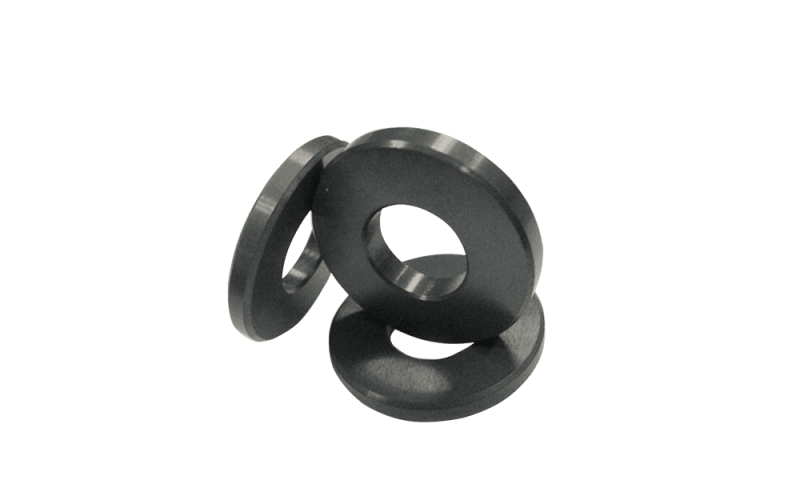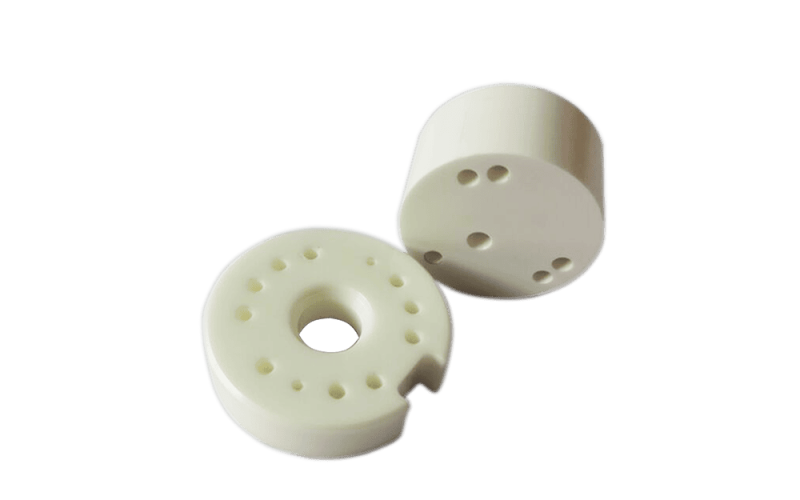Table of Contents
Did you know? Silicon carbide seals in oil pumps can last three times longer than metal ones and cut repair costs by 40%! That’s a big deal in the oil and gas world, where machines work super hard. Check out this quick table to see why technical ceramics are awesome:
| Why They Rock | What You Get |
| Last Way Longer | Up to 3x more life than metal |
| No Rust | Perfect for salty or acidic places |
| Super Tough | Handles heat and wear like a champ |
| Saves Money | Cuts repair costs by 20-40% |
So, what are technical ceramics in oil and gas exploration equipment? They’re special materials that make machines stronger and last longer. At Eshino Precision, we make these ceramics to help oil and gas folks like you. Let’s explore how they work, why they’re cool, and what they do!
Introduction to Technical Ceramics
What Are Technical Ceramics Anyway?
Imagine regular ceramics like the plates you eat on, but way fancier. Technical ceramics are super-strong materials made for tough jobs. Think of stuff like alumina, zirconia, and silicon carbide. They’re built to be hard, tough, and ready for anything. In oil and gas exploration, where machines dig deep into the Earth, these ceramics are like superheroes.
Why do they matter? Because oil and gas equipment deals with crazy heat, pressure, and yucky liquids. Regular metals can’t handle it—they rust or break fast. But technical ceramics in oil and gas exploration equipment stay strong. They’re made with pure stuff and cooked in special ovens to be extra awesome.
Why Oil and Gas Loves Them
Drilling for oil is no picnic. Machines face temperatures hotter than an oven and pressures that could squish a car. Plus, there’s sand and salty water that wears stuff out. Technical ceramics don’t care—they keep going. For example, our ceramic seals stop leaks and last ages, even in the worst spots.
“Technical ceramics are a game-changer,” says Dr. Emily Chen, a materials expert at CoorsTek. “They let oil companies drill deeper and longer without stopping for fixes.” That’s why we at Shenzhen Eshino love making them—check out more at Technical Ceramics 101.
Why Technical Ceramics Matter in Oil and Gas Exploration
The Tough World of Oil Drilling
Oil and gas exploration is wild! Machines dig miles underground, where it’s super hot—over 200°C sometimes. There’s also tons of pressure and gritty stuff that scratches everything. Regular metals, like steel, get tired fast. They rust, wear out, or melt. That means stopping work to fix things, which costs time and money.
But technical ceramics in oil and gas exploration equipment are different. They’re tough enough to handle the heat and grit. For instance, our silicon carbide rods don’t break down, keeping drills running smoothly.
How Ceramics Save the Day
So, why are ceramics so important? Here’s the scoop:
- Heat Fighters: They stay strong even when it’s crazy hot.
- No Rust: Salty water or acid? No problem—they don’t corrode.
- Wear Warriors: Sand and rocks can’t scratch them easily.
Because of this, technical ceramics cut downtime. That’s when machines stop, and no one’s happy. With ceramics, you fix less and drill more. Want to learn how they reduce costs? Read our blog on reducing maintenance costs.
Types of Technical Ceramics Used
The Ceramic Superstars
Not all ceramics are the same. Each type has its own powers. Here’s a quick list of the ones used in oil and gas:
- Alumina (Al2O3): Super hard and rust-proof. Great for bushings and seals.
- Zirconia (ZrO2): Tough and heat-resistant. Perfect for rods.
- Silicon Carbide (SiC): Crazy hard and good with heat. Used in nozzles.
- Silicon Nitride (Si3N4): Strong and doesn’t crack easily. Awesome for bearings.
- Tungsten Carbide (WC): Super tough for drill bits.
Which One’s Best?
Choosing the right ceramic is easy when you know what you need. If it’s super scratchy, go with silicon carbide. For hot spots, zirconia’s your buddy. Here’s a handy table:
| Ceramic | Super Power | Best For |
|---|---|---|
| Alumina | Hard, no rust | Seals, valves |
| Zirconia | Tough, heat-proof | Wear parts |
| Silicon Carbide | Extra hard, hot stuff | Nozzles, pumps |
Need help picking? Our silicon carbide page has more info!
Real-World Applications in Exploration Equipment
Where Ceramics Show Off
Technical ceramics in oil and gas exploration equipment pop up in cool places. Here’s where they shine:
- Drill Bits: Bearings and seals stay strong with ceramics like tungsten carbide.
- Valves: Ceramic valves handle hot, yucky fluids.
- Pumps: Seals and parts like plungers last longer.
- Sensors: Stay accurate even in tough spots.
Check out these side-by-side pics of our products:
A Real Success Story
Here’s a cool example: An oil company offshore swapped metal pump seals for our silicon carbide ones. Guess what? They lasted three times longer—years, not months! Repairs dropped by 40%, saving tons of cash. “Ceramics turned our pumps into workhorses,” said their lead engineer, John Carter. That’s the power of technical ceramics in oil and gas exploration equipment. See how we do it at enhancing durability.
Benefits Over Traditional Materials Like Metals
How Ceramics Beat Metals
Metals like steel are tough, but technical ceramics in oil and gas exploration equipment are tougher. Why? They last way longer and handle crazy conditions better. Imagine a metal pump seal rusting in salty water—it’s a mess! Ceramics don’t rust, so they keep working. Plus, they’re super hard, so sand and rocks don’t scratch them up as fast.
Here’s a quick list of why ceramics win:
- Longer Life: They wear out slower, so you replace less.
- No Rust: Perfect for wet, salty, or acidic spots.
- Heat-Proof: Stay strong even when it’s super hot.
For example, our silicon nitride bushings outlast metal ones by years. That saves you money and headaches. Want more details? Check out advantages of technical ceramics.
Good for the Planet Too
Here’s a cool bonus: technical ceramics help the Earth. How? Because they last so long, you don’t need new parts as often. Fewer replacements mean less waste. “Ceramics cut our environmental footprint,” says Lisa Patel, an oil industry sustainability expert. They also use less energy in some machines since they’re lighter than metals. Learn more about their powers at wear resistance.
Challenges and Smart Solutions
What’s Tricky About Ceramics?
Technical ceramics in oil and gas exploration equipment aren’t perfect. They’ve got some challenges, but we’ve got fixes! First, they can be brittle. That means they might crack if you drop them hard, unlike metal which bends. Second, they cost more at the start. Making them takes fancy machines and hot ovens. Lastly, shaping them just right is tough because they’re so hard.
Don’t worry, though—these problems have answers. Our team at Shenzhen Eshino makes sure ceramics work great for you.
How We Fix the Problems
Here’s how we solve those challenges:
- Brittleness: We use tougher ceramics like zirconia or design parts to avoid big bangs.
- Cost: They’re pricier up front, but save cash later with less fixing. New tricks like 3D printing cut costs too.
- Precision: We use cool tools like lasers to shape them perfectly.
So, technical ceramics stay awesome even with these hiccups. Curious about toughness? See our guide on brittleness and toughness.
Market Trends and Growth
The Ceramics Boom
Good news—technical ceramics in oil and gas exploration equipment are getting super popular! The market for them is growing fast, like 7.4% every year from 2024 to 2029. That means by 2029, it could be worth $17.5 billion! Why? Because more oil and gas folks see how ceramics save time and money.
Here’s a table with the scoop:
| Year | Market Size | Growth Rate |
|---|---|---|
| 2024 | $12.2 billion | 7.4% |
| 2029 | $17.5 billion | Keeps going up! |
Oil and gas uses about 15% of all technical ceramics now, and that’s growing too. Check out our take on industry shifts at ceramics’ impact.
What’s Next for Ceramics
The future looks bright! New ideas are making technical ceramics even better:
- Fancy Materials: Stronger mixes for tougher jobs.
- Tiny Tech: Nanotechnology makes them extra cool.
- 3D Printing: Fast and cheap custom parts.
These trends mean more awesome ceramics for oil and gas. Want to stay ahead? See our ceramic nozzles in action.
People Also Ask
What You Want to Know
People ask lots about technical ceramics in oil and gas exploration equipment. Here are some big ones:
- What kinds are used? Alumina, silicon carbide, zirconia—each has a special job.
- How do they help? They fight wear and heat, so machines last longer.
- Are they worth it? Yes! More cost at first, but big savings later.
Got more questions? Our blog on properties of ceramics has answers.
Quick Answers for You
Here’s more:
- Examples? Think seals, valves, and bearings.
- New stuff? 3D printing and better mixes are coming fast.
- Green bonus? Less waste makes them Earth-friendly.
“Ceramics answer the industry’s toughest questions,” says Mark Evans, a drilling tech expert. Dive deeper at oil and gas applications.
Conclusion: The Future of Technical Ceramics
Why Ceramics Are the Future
Technical ceramics in oil and gas exploration equipment are here to stay. They’re tough, long-lasting, and save money by cutting repairs. Plus, they help the planet with less waste. From drill bits to pumps, ceramics make everything better. And with new tech like 3D printing, they’re only getting cooler.
Ready to Transform Your Engineering Solutions?
Ready to make your equipment unstoppable? At Shenzhen Eshino, we’ve got the ceramics you need—check out our products! Whether it’s a tough alumina rod or a silicon carbide bushing, we’ll help you drill smarter. Visit contact us today—let’s build something awesome together!



